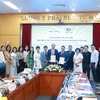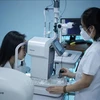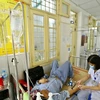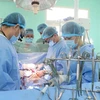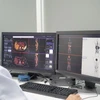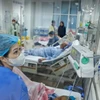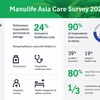The country's oncology-prevention programmes should focus on treatable infections by encouraging the use of vaccinations and antimicrobial treatment, a group of oncologists have recommended.
Vaccinations could be key to prevent some of the infection-related cancers, including liver and cervical cancers, according to an article published by the six oncologists in the Vietnam Oncology Journal.
Infections and cancer often provide unique models of pathogenesis in relation to diagnosis, therapy, screening and prevention, according to their report, which was presented at an oncology conference held in HCM City on December 4.
For instance, HBV vaccinations have been shown to prevent liver cancer in high-incidence countries.
The HPV vaccine, which is now available, reduces the chances of getting cervical cancer.
A report from the World Health Organisation in 2003 showed that up to 23 percent of malignancies in developing countries were caused by infectious agents.
In developed countries, cancers caused by chronic infections accounted for approximately 8 percent of all malignancies.
An infective agent is linked to some of the most common cancers. H. pylori, for example, causes gastric cancer; human Papillomavirus causes the vast majority of cervical cancer; and hepatitis viruses cause liver cancer.
These type of cancers are among the top five most prevalent cancers in Ho Chi Minh City, according to the HCM City Oncology Hospital.
From 2008 to 2012, the hospital was in charge of recording population-based cancer registration in the city.
In the city, 34,581 cancer patients were observed during this period. The crude rate (the number of cancer cases divided by the population and multiplied by 100,000) of the two genders was 92.2 in male and 100.5 female per 100,000, according to the hospital.
The age-standardized rate (which takes into account how many old or young people are in the population) of the two genders was 134.5 in male and 109.9 in female per 100,000.
The most common cancers in both genders increased rapidly from the age of 40.
Compared to the 2000-2004 period, there was an increase in both the crude rate and age-standardized rate, according to the oncologists' research findings.
Also at the conference, a study investigating the rates of depression and factors in breast cancer patients in HCM City hospitals was presented.
The study of 339 breast cancer patients showed that a high percentage of breast cancer patients had positive scores of depression, with 28.6 percent. Mild depression affected 13.6 percent of the patients.
Depression prevalence was highest among patients aged over 70, the illiterate, poor patients, the unemployed and the unmarried.
The research findings showed that doctors need better understanding of depression in breast cancer patients, and should choose the appropriate treatments to improve their quality of life.-VNA
Vaccinations could be key to prevent some of the infection-related cancers, including liver and cervical cancers, according to an article published by the six oncologists in the Vietnam Oncology Journal.
Infections and cancer often provide unique models of pathogenesis in relation to diagnosis, therapy, screening and prevention, according to their report, which was presented at an oncology conference held in HCM City on December 4.
For instance, HBV vaccinations have been shown to prevent liver cancer in high-incidence countries.
The HPV vaccine, which is now available, reduces the chances of getting cervical cancer.
A report from the World Health Organisation in 2003 showed that up to 23 percent of malignancies in developing countries were caused by infectious agents.
In developed countries, cancers caused by chronic infections accounted for approximately 8 percent of all malignancies.
An infective agent is linked to some of the most common cancers. H. pylori, for example, causes gastric cancer; human Papillomavirus causes the vast majority of cervical cancer; and hepatitis viruses cause liver cancer.
These type of cancers are among the top five most prevalent cancers in Ho Chi Minh City, according to the HCM City Oncology Hospital.
From 2008 to 2012, the hospital was in charge of recording population-based cancer registration in the city.
In the city, 34,581 cancer patients were observed during this period. The crude rate (the number of cancer cases divided by the population and multiplied by 100,000) of the two genders was 92.2 in male and 100.5 female per 100,000, according to the hospital.
The age-standardized rate (which takes into account how many old or young people are in the population) of the two genders was 134.5 in male and 109.9 in female per 100,000.
The most common cancers in both genders increased rapidly from the age of 40.
Compared to the 2000-2004 period, there was an increase in both the crude rate and age-standardized rate, according to the oncologists' research findings.
Also at the conference, a study investigating the rates of depression and factors in breast cancer patients in HCM City hospitals was presented.
The study of 339 breast cancer patients showed that a high percentage of breast cancer patients had positive scores of depression, with 28.6 percent. Mild depression affected 13.6 percent of the patients.
Depression prevalence was highest among patients aged over 70, the illiterate, poor patients, the unemployed and the unmarried.
The research findings showed that doctors need better understanding of depression in breast cancer patients, and should choose the appropriate treatments to improve their quality of life.-VNA








